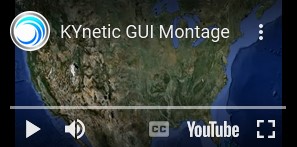KYPipe releases the new (2021) transient analysis book, Surge Analysis and the Wave Plan Method: A Powerful, Accurate and Stable Method for Water Hammer Studies, by Dr. Srinivasa Lingireddy and Dr. Don J. Wood. This book was written for both practicing engineers and academics. It compares and contrasts the powerful and stable Wave Plan Method (WPM) with the Method of Characteristics (MOC), and shows how the computational efficiency of WPM makes it the better choice for most real-world modeling scenarios, a difference which is increasingly noticeable as scenarios increase in size and complexity. This is because, while both of these tools calculate the attenuation of pressure waves at components and junction nodes, WPM does not require calculations at interior points along pipes, instead utilizing a single friction loss calculation to represent piping losses between nodes. This can save modelers immense amounts of analysis time, since orders of magnitude fewer calculations may be required, depending on system size.
This book also serves as a guide to surge (waterhammer) modeling. It begins by examining the causes and effects of transient events in liquid-filled pipes. The authors then discuss the various aspects of model building which are common to both MOC and WPM, including:
⦁ Pressure attenuation.
⦁ Determination of wave speed in different pipe types and in various liquid media.
⦁ Pump and turbine characteristic curves.
⦁ The effects of boundary conditions, including the effects of the air-water interface as it applies to bulk air intrusion into pipelines, and also as it relates to the use of air/vacuum valves as surge protection.
⦁ Surge control devices, including check valves and the phenomenon known as check valve slam. The book includes a detailed examination of each type of surge protection device.
⦁ The assumptions and uncertainties encountered during data collection and model building. The authors examine the potential effect of these uncertainties, and where uncertainties cannot be mitigated, the book discusses ways to increase the safety factor of surge protection designs.
A book excerpt (including the Title Page, the Table of Contents and the Introduction, which describes the chapters and appendices in detail) can be accessed by clicking here: excerpt link. An image of the front and back cover is shown on this page.
The book can be ordered by emailing [email protected] or calling 469-250-1362. The price for the book is $200, and shipping is free within the continental United States. Contact us for expedited shipping prices or for shipping to other areas of the world. This book is also available as an e-book; click on this e-book link.



